"The dependence of all living things on water. The physical properties of water; water as a habitat for such creatures as insects, birds, beavers, frogs; use and abuse of water resources by man." (BC Archives)
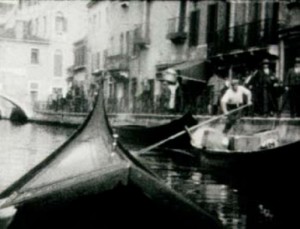
"Travelogue with intertitles of Alexander Black's trip to Europe in 1928. It includes footage of air and sea travel, a phantom ride in a gondola, and footage of Black himself feeding pigeons in Venice, Italy." UC Berkeley Library.
"A bird picture." American Cinematographer, Feb. 1937, 80.
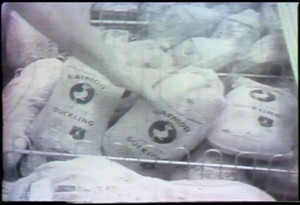
"Fowl is Fare is a documentary showing how Long Island ducks are prepared for market. Unusual angles and tight editing keep the film moving" PSA Journal, Aug. 1967, 37.
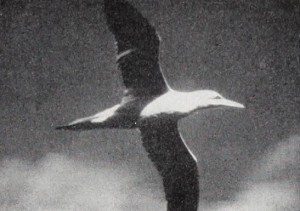
"In one sense, the outstanding strength of The Gannets, Maxim Award winner for 1950, is its seemingly worst weakness. That strength is the unquestioned — but apparently accidental — entertainment which the film provides. Running a brief 400 feet of 16mm. color, the picture examines the famous gannet colony on Gaspe's Bonaventure Island, treating the giant birds with lighthearted good humor and casual unpretension. The entire accomplishment seems too easy. You could do it, you feel, over a single sunny weekend. But don't let this fool you. To begin with, there is the technique. In The Gannets, Warren Levett has employed with a knowing skill every technical artifice learned in long years of bird filming. Telephoto lenses present his gleaming subjects in crisp and astounding closeups. The follow shots of birds in flight are suave and invariably centered, while slow motion reveals arrestingly their superb aero-dynamics. Side and back lighting enhance repeatedly the natural beauty of the birds, aided on occasion by a shrewd use of the polaroid filter. Secondly, there is the subject matter treatment. Pictorially, Mr. Levett knows his way around a sequence with unerring instinct. He knows, too, the strength which lies in a pair of shears; his editing of a subject so often overladen by the amateur is incisive and refreshing. And, perfectly interwoven with the pictorial presentation, is the third strength of The Gannets — the delight of the picture's narrative. You learn things about gannets as you listen — but they're not long-winded nor in Latin — and you're scarcely conscious of the learning. What you are conscious of is that the gannet is a strange, gabby, beautiful and, sometimes, supremely ludicrous creature. You are, in a word, entertained as you are informed — and you love every light-hearted minute of it. It is only later, if at all, that you realize the true measure of this superb movie." Movie Makers, Dec. 1950, 446-447.
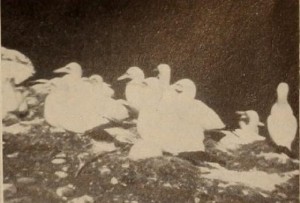
"Gannets are treated exhaustively and other aspects of life on Gaspe lightly in W. A. Levett's Gaspesia, a sound and often informative study of this tiny Canadian community. Mr. Levett has his Kodachrome under crisp control, and the strong textures in many of his sequences lend authenticity to a generally able film. The life of the gannets is admirably handled, though the time devoted to them tends to give the film a split personality." Movie Makers, Dec. 1949, 469.
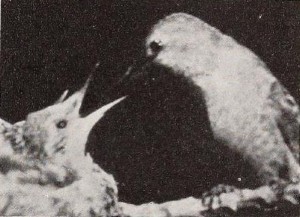
"In making Hummingbird, Dr. Richard Cassell has succeeded admirably in producing a film of absorbing interest and, at the same time, one of distinct educational value. In a straightforward and workmanlike manner, he presents the life story of a family of these minute winged creatures in close shots and extreme closeups. The film treatment is simple and direct, stressing the growth and habits of the birds. The patience that must go into the production of a film of this type never shows, but Dr. Cassel's movie making skill is apparent in every scene. While the technical excellences of exposure and composition are notable in this film, the most amazing achievement is its lighting. Obviously difficult even to film, many of the closeups appear almost to have studio lighting. The titling is clean cut and well integrated and the cutting is deftly paced, this quality being helped by the wide range of viewpoints and an excellent choice of camera positions." Movie Makers, Dec. 1941, 565-566.
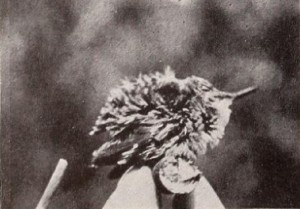
"Shakespeare tells us that Owen Glendower said that he could summon spirits from the vasty deep; Archimedes boasted that, with the right kind of lever and fulcrum, he could move the Earth. But, did either of them ever tackle hummingbirds? E. R. Hoff, in Hummingbirds, not only tackled them but, apparently, he so charmed them that they flew where and when he wanted. As a result, whoever sees his film will know more about the ways of the almost invisible aerial dynamo than he has ever believed that anybody could know, short of being a hummingbird himself. This film is not only a revelation of incredible patience and determination, but it is cinematographically an accomplishment of genuine intelligence. Mr. Hoff has called our attention to the control of composition, sequence and background quality, evidently because he feared that they might be taken for granted. It is precisely because of these factors that Hummingbirds placed in the Ten Best. It is beyond the limits of this rating of Movie Makers to attempt to find an adequate laurel for the superb achievement of the naturalist which Mr. Hoff is. At any rate, the next time we see a flash of color on a summer afternoon, we can say, "What now, little bird? We know what makes you go round." " Movie Makers, Dec. 1940, 600.
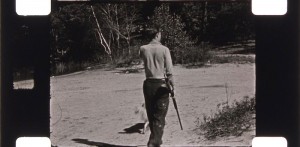
"Hunting, cast of "Boy," played by Winthrop Rolfe, and "Dog," played by Teddy. Boy, walks with Dog through the forested mountainside, gazes at views over the alley, drinks water from a rushing stream, and kneels to shoot at birds." Notes by (NHF) Chris Reed and Chris Castiglia, June 2013
Total Pages: 6